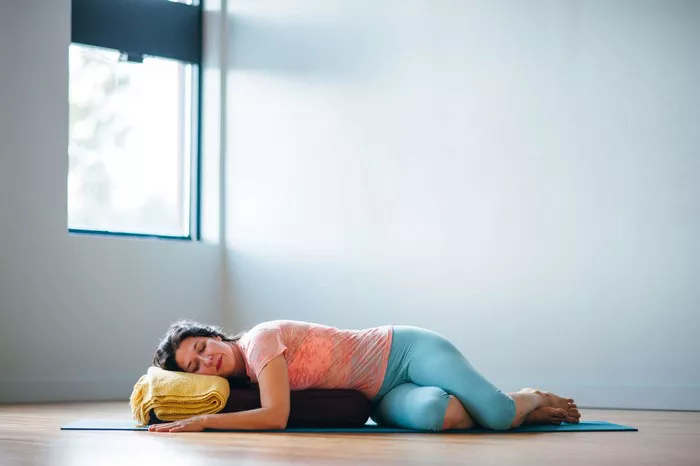Standing asanas, or standing yoga poses, form the foundation of many yoga practices. They help improve posture, build strength, increase flexibility, and enhance balance. Whether you are a beginner or an advanced practitioner, these poses are essential for developing body awareness and alignment. In this article, we will explore five important standing asanas, their benefits, and how to perform them correctly.
1. Tadasana (Mountain Pose)
Tadasana, or Mountain Pose, is the foundation of all standing asanas. It may look simple, but it is a powerful pose that teaches proper alignment and body awareness.
How to Perform Tadasana:
- Stand with your feet together or hip-width apart.
- Distribute your weight evenly across both feet.
- Engage your thighs and lift your kneecaps without locking the knees.
- Lengthen your spine and roll your shoulders back and down.
- Let your arms rest naturally by your sides, palms facing forward.
- Gaze straight ahead and take deep, steady breaths.
Benefits of Tadasana:
- Improves posture and alignment.
- Strengthens the legs, core, and back muscles.
- Enhances focus and concentration.
- Helps in grounding and centering the mind.
2. Virabhadrasana I (Warrior I Pose)
Warrior I Pose, named after the mythical warrior Virabhadra, is a strong and powerful pose that builds endurance and stability.
How to Perform Virabhadrasana I:
- Begin in Tadasana and step one foot back, about 3-4 feet apart.
- Turn your back foot slightly outward (about 45 degrees).
- Bend your front knee at a 90-degree angle, keeping it aligned with your ankle.
- Extend your arms overhead, keeping them parallel or touching palms together.
- Keep your hips squared to the front and engage your core.
- Hold the pose for several breaths before switching sides.
Benefits of Virabhadrasana I:
- Strengthens the legs, arms, and core.
- Opens the hips and chest, improving flexibility.
- Enhances focus, balance, and stamina.
- Encourages a sense of determination and power.
3. Virabhadrasana II (Warrior II Pose)
Warrior II is another dynamic standing pose that enhances strength and endurance while opening the hips.
How to Perform Virabhadrasana II:
- Start in Tadasana and step one foot back, about 3-4 feet apart.
- Turn your back foot outward (about 90 degrees) and keep the front foot pointing forward.
- Bend the front knee at a 90-degree angle, keeping it aligned with your ankle.
- Stretch both arms out parallel to the floor, palms facing down.
- Keep your torso upright and gaze over the front fingertips.
- Hold the pose for several breaths before switching sides.
Benefits of Virabhadrasana II:
- Builds strength in the legs, arms, and shoulders.
- Improves hip flexibility and stability.
- Enhances endurance and concentration.
- Encourages mental resilience and confidence.
4. Utkatasana (Chair Pose)
Utkatasana, or Chair Pose, is a challenging standing asana that strengthens the lower body and core.
How to Perform Utkatasana:
- Begin in Tadasana, with your feet together or hip-width apart.
- Inhale and raise your arms overhead, keeping them parallel.
- Exhale and bend your knees as if sitting back into an invisible chair.
- Keep your weight in your heels and avoid letting your knees go past your toes.
- Engage your core and keep your spine long.
- Hold for several breaths before releasing.
Benefits of Utkatasana:
- Strengthens the legs, glutes, and core muscles.
- Improves posture and spinal alignment.
- Enhances endurance and stamina.
- Stimulates the heart and improves circulation.
5. Trikonasana (Triangle Pose)
Trikonasana, or Triangle Pose, is a powerful standing pose that enhances flexibility and balance while stretching the entire body.
How to Perform Trikonasana:
- Stand with your feet about 3-4 feet apart.
- Turn your front foot forward and the back foot slightly inward.
- Extend your arms out to the sides, parallel to the floor.
- Reach forward with your front hand and then lower it to your shin, ankle, or the floor.
- Extend your other arm upwards, keeping your chest open.
- Hold the pose for several breaths before switching sides.
Benefits of Trikonasana:
- Stretches the legs, hips, and spine.
- Strengthens the thighs, knees, and ankles.
- Improves balance and stability.
- Stimulates digestion and relieves stress.
Conclusion
Standing asanas are an essential part of any yoga practice, offering numerous physical and mental benefits. Tadasana builds foundational awareness, Warrior I and II enhance strength and focus, Chair Pose challenges endurance, and Triangle Pose improves flexibility and balance. By incorporating these five standing asanas into your routine, you can develop a strong, stable, and flexible body while cultivating a sense of mindfulness and presence.
Whether you are a beginner or an experienced yogi, these poses provide a solid foundation for deeper yoga practice. Remember to focus on your breath, maintain proper alignment, and practice with patience and consistency. Happy practicing!
Related Topics:

























